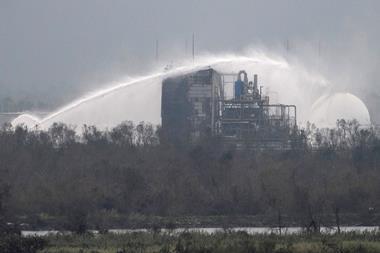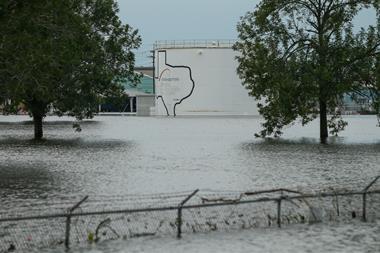Almost one-third of chemical facilities in the US that store hazardous substances are threatened by global warming and its associated climate affects, the US Congress’ Government Accountability Office (GAO) has concluded.
The congressional watchdog found that 31% of the Environmental Protection Agency’s (EPA’s) 10,420 so-called ‘Risk Management Plan’ (RMP) facilities – which store or use dangerous chemicals – are located in areas with ‘natural hazards’ that may be exacerbated by climate change. These elevated dangers include flooding, storm surges, wildfires and rising sea levels.
‘Accidental releases of hazardous chemicals caused by natural hazards have been rare at RMP facilities, according to EPA and the Chemical Safety Board (CSB),’ the GAO said. ‘However, recent natural disasters have demonstrated the potential for natural hazards to trigger fires, explosions and releases of toxic chemicals at facilities.’ For example, unprecedented flooding from Hurricane Harvey in 2017 caused a series of explosions at an Arkema plant in Texas.
From August 2020 to February 2022, the GAO reviewed documents from the EPA, US Occupational Safety and Health Administration and the CSB, as well as federal regulations, training materials and more. The agency concluded that natural hazards, including those worsened by climate change, may lead to accidental chemical releases in a range of ways. GAO said wildfires or the threat of wildfires may result in power outages, which could affect the safe operations of these facilities.
The GAO cautioned, however, that its 31% estimate might not fully account for the number of RMP facilities that could be affected by these hazards. This is because data is not available for certain areas of the US, and some facilities may be indirectly affected by natural hazards even if they are located outside risk zones.
The report noted that the costs associated with managing risks from natural hazards and climate change are a major challenge for these chemical facilities, especially smaller ones. These expenses include retrofitting or changing facility operations.
The GAO recommended that the EPA provide additional compliance assistance – such as data, tools and technical support – to these facilities, and also clarify requirements and instructions about incorporating threats from natural hazards and climate change into their risk management programmes. In addition, the agency suggested that the EPA should design an information system to track common deficiencies found during inspections, including any related to natural hazards and climate change.
In response, the EPA said it plans to develop materials on risks from natural hazards and climate change, including compliance assistance and guidance, based on the provisions in its final RMP rule that is scheduled to be published in 2023. However, it went on to argue that the proposed ‘sophisticated electronic database’ is not necessary because any process that effectively tracks common deficiencies and helps focus compliance assistance would be just as effective.

















1 Reader's comment